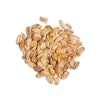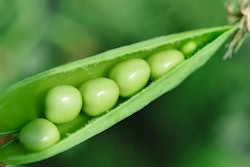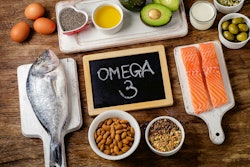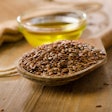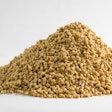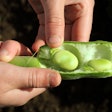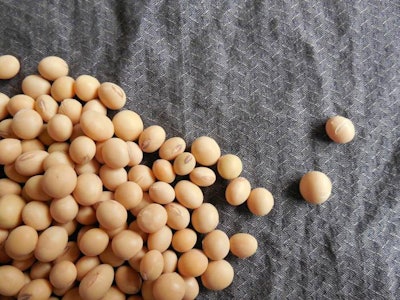
A term frequently used in animal nutrition with very little explanation behind it other than being an anti-nutritional factor.
Without confusing ourselves more than necessary with chemistry terms, it is nevertheless useful to distinguish between glycosides (with a “y”) and glucosides (with a “u”). Very broadly speaking, a chemical compound with a sugar attached to it can be called a glycoside; and in nature, these compounds abound, especially among plants. If that sugar happens to be a glucose, then this glycoside can also be called a glucoside. It would have been a fructoside, if the sugar were fructose, and so on. Thus, all glucosides are glycosides, but the opposite is not always true.
In animal nutrition, glycosides are generally regarded as important anti-nutritional factors. In simple terms, plants produce these substances as a form of a self-defense system against invaders such as herbivores, insects and microorganisms (bacteria and fungi). Plants with high enough concentrations to concern us are mostly protein-rich crops, such as legumes (for compound feeds), and certain herbage plants (for grazing animals). For our purposes, we will distinguish offensive glycosides into two broad categories: those that exist preformed and ready to cause damage, and those that exist in precursor forms that require activation by an enzyme that coexists isolated in the plant tissue and is released only during tissue damage.
Saponins: Preformed defense chemicals with anti-nutritional activity
Saponins are a diverse group of glycosides (mostly of glucose and galactose) easily recognizable by a very characteristic physical property: they form a lather when stirred in a water solution. They abound in the fresh forage of legume plants (trefoils and alfalfa), beets, lima beans, peas, and most importantly in soybeans. The foam created in the rumen of ruminant animals can seal the esophageal orifice, preventing gasses from escaping through the mouth. This leads to bloating that in severe cases can be lethal. In addition, saponins cause the lysis of red blood cells (hemolysis) that can lead to anemia, jaundice, sepsis and/or increased susceptibility to infections. The bitter taste of saponins reduces feed palatability, but saponins from some sources (for example, oats) may enhance nutrient digestibility, and saponins from yucca may have anti-inflammatory properties and/or reduce nitrogen emissions. Thus, in general, the role of saponins in animal nutrition is far from being conclusive.
Sulfur- and cyanogenic-glycosides require activation by an enzyme to become toxic
Sulfur glycosides or glucosinolates abound in plants of the cabbage family (Brassicaceae), with the most well-known one being rapeseed (canola). Myrosinase is the enzyme that being stored in separate compartments in the plant tissue, activates these compounds upon tissue damage, by removing the glucose part. Thus, bioactive compounds are released, mainly isothiocyanate, which block the uptake of iodine by the thyroid gland leading to goiter, a metabolic disorder that can impair nutrient metabolism among other severe health problems. There is no practical way to remove sulfur-containing glycosides from existing feed ingredients, other than by genetic manipulation (hence, the creation of low-glycoside varieties of rapeseed meal). Otherwise, the only way to minimize their effects is by reducing the inclusion rate of offensive feed ingredients in complete feeds and (or) by dilution.
In contrast, cyanogenic glycosides are extremely toxic compounds that can lead to death in a matter of a few hours due to the release of hydrogen cyanide, HCN, upon their activation by plant tissue disruption. Animals have the capacity to detoxify these glycosides when encountered in fairly small quantities. However, in order to be fed to animals in significant quantities, they need to be deactivated. The most widely known example of a feed ingredient rich in cyanogenic glycosides is cassava (others include young sprouts of Sudan grass, trefoil and linseed). Cassava tubers must be first peeled (the peel contains high levels of cyanogenic glycosides), chopped and pressed, and the resulting chips left to dry under the sun for a considerable time. The released enzyme, beta-glucosidase, reacts with the glycosides, releasing in turn hydrogen cyanide (prussic acid) which, being volatile, eventually escapes from the chopped and exposed material. Nevertheless, complete removal is impossible and, thus, feed ingredients with this glycoside must be titrated and their inclusion adjusted to ensure animals do not receive more than 2 mg per kg live weight daily.
Ruminants are especially sensitive to all glycosides, not only because saponins cause bloating, but rumen bacteria can cause the hydrolization of sulfur and cyanogenic glycosides, exacerbating thus their symptoms and problems. Here, care should be taken regarding cyanogenic glycosides because, under high dosages, the first symptom remains death, whereas at lower, yet toxic dosages, treatment is difficult.
In contrast, monogastrics appear more resilient against glycosides. First, their low stomach pH usually denatures the enzymes (proteins) that are required to activate the harmful precursors and, second, saponins are not usually consumed in large enough concentrations to cause sufficient bloating.

